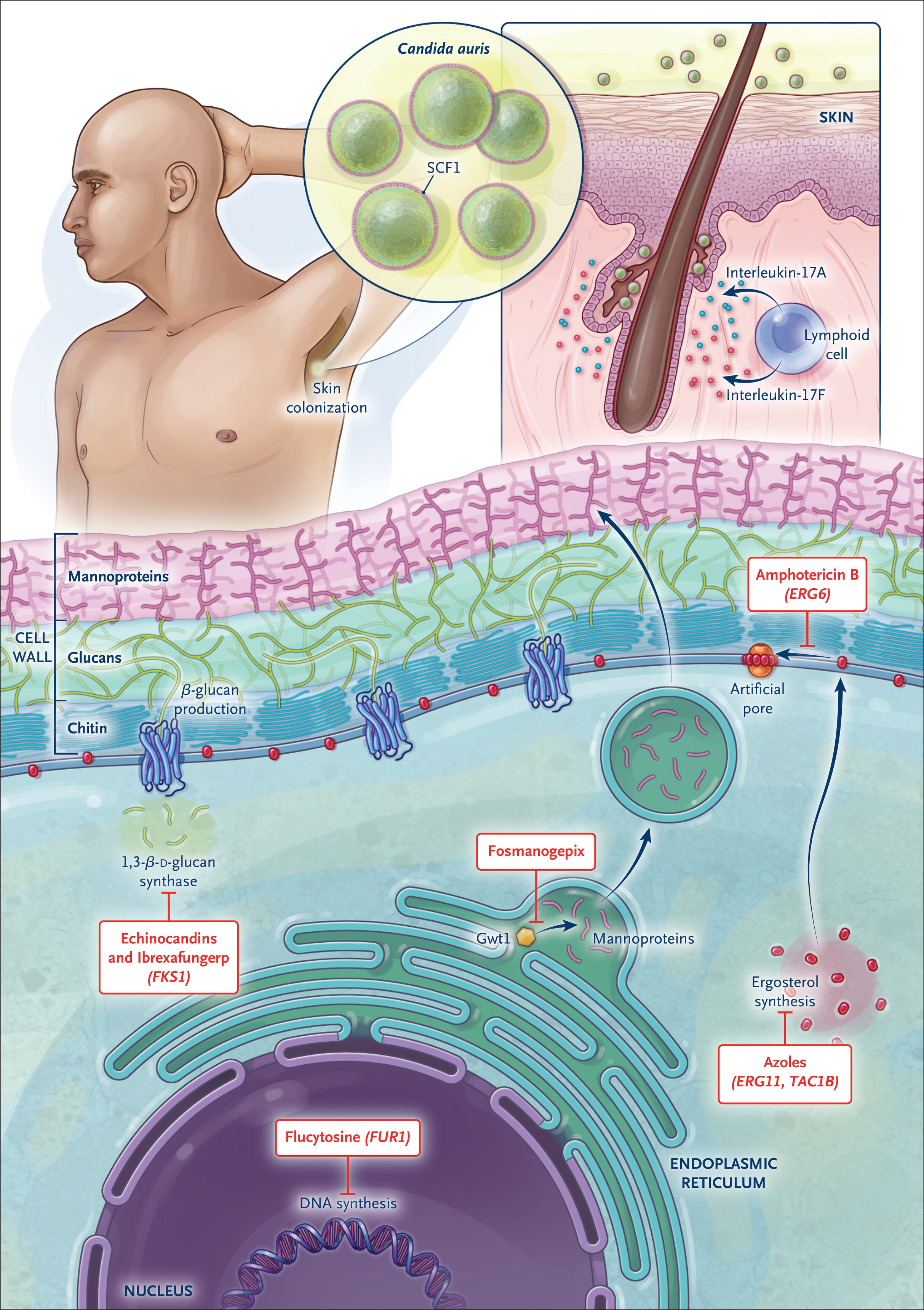 @LIFEworld @LIFEworld |
| NEWSLETTER - February 2025
Welcome to the new LIFE Worldwide quarterly newsletter. We aim to bring you the latest developments in the world of Medical Mycology, including breaking news, diagnostic innovations and literature reviews.
|
|
Invasive pulmonary aspergillosis in interstitial lung disease
|
|
A recent study published in BMC Pulmonary Medicine has shed light on the clinical features and risk factors associated with invasive pulmonary aspergillosis (IPA) in patients suffering from interstitial lung disease (ILD). Most ILD patients are not immunocompromised and yet affected by IPA, as in other conditions compromising lung function.
The main finding was a relatively high frequency of IPA in ILD – 16.4% of those ILD patients admitted to hospital. There are estimated to be 4.71 million people worldwide with ILD according to the Global Burden of Disease consortium. MORE |
|
Global health update - TB patients in Indonesia
|
|
A recent study published in the Journal of Fungi reveals that patients with multi-drug-resistant tuberculosis (MDR-TB) in Indonesia are at a significantly higher risk of co-infections with chronic pulmonary aspergillosis (CPA) and chronic pulmonary histoplasmosis (CPH). This is the first research into the incidence of CPA as a co-infection of MDR-TB patients in Indonesia in tandem with anti-Histoplasma IgG and CPH. MORE
Antifungal treatment update - ETI for cystic fibrosis
The American Journal of Respiratory and Critical Care Medicine has recently published an article by Morgan et al, highlighting the impact of the triple-combination therapy Elexacaftor/Tezacaftor/Ivacaftor (ETI) on the prevalence of Aspergillus fumigatus in individuals with cystic fibrosis (CF). The research found that ETI therapy significantly reduced the presence of A. fumigatus in the airways of CF patients. This reduction is noteworthy because A. fumigatus is a common fungal pathogen associated with increased morbidity in CF due to its role in respiratory infections and allergic responses. The findings suggest that ETI not only improves CFTR function but also may contribute to better respiratory health by decreasing fungal colonization. This study highlights the potential dual benefits of ETI therapy in managing cystic fibrosis. MORE
Wildfires and fungal infections
With the recent Californian wildfires being headline news across the world, we highlight a study from Mulliken et al, showing how dangerous these fires can be as a vector for infection. This study identifies an increase of patients admitted to hospital with coccidioidomycosis, as a direct result of wildfire activity. The study also demonstrates that there are two potential mechanisms for this increase - inspiration of increased fungal spore quantity and interference of wildfire smoke with the normal immune response to naturally occurring fungal aerosols. Interest in the association between wildfire smoke exposure and fungal infections has important clinical and public health implications, especially with large wildfires projected to grow in size and number as a result of global warming. |
|
Review - Candida auris
Candida auris has been revealed to be a growing global health threat. First identified in Japan in 2009, this infection has spread across the globe. A new review from Lionakis and Chowdhary has summarised the major outbreaks and treatment options that have been discovered. This article covers mycological features, immune responses, diagnostics, risk factors and prevention measures.
Fig 1: Pathogenesis of C. auris, therapeutic targets, and genes conferring drug resistance.

Coming up
ISHAM 2025 Congress. 20-24 May 2025, Iguazu Falls, Brasil.
|
| www.fungaleducation.org |